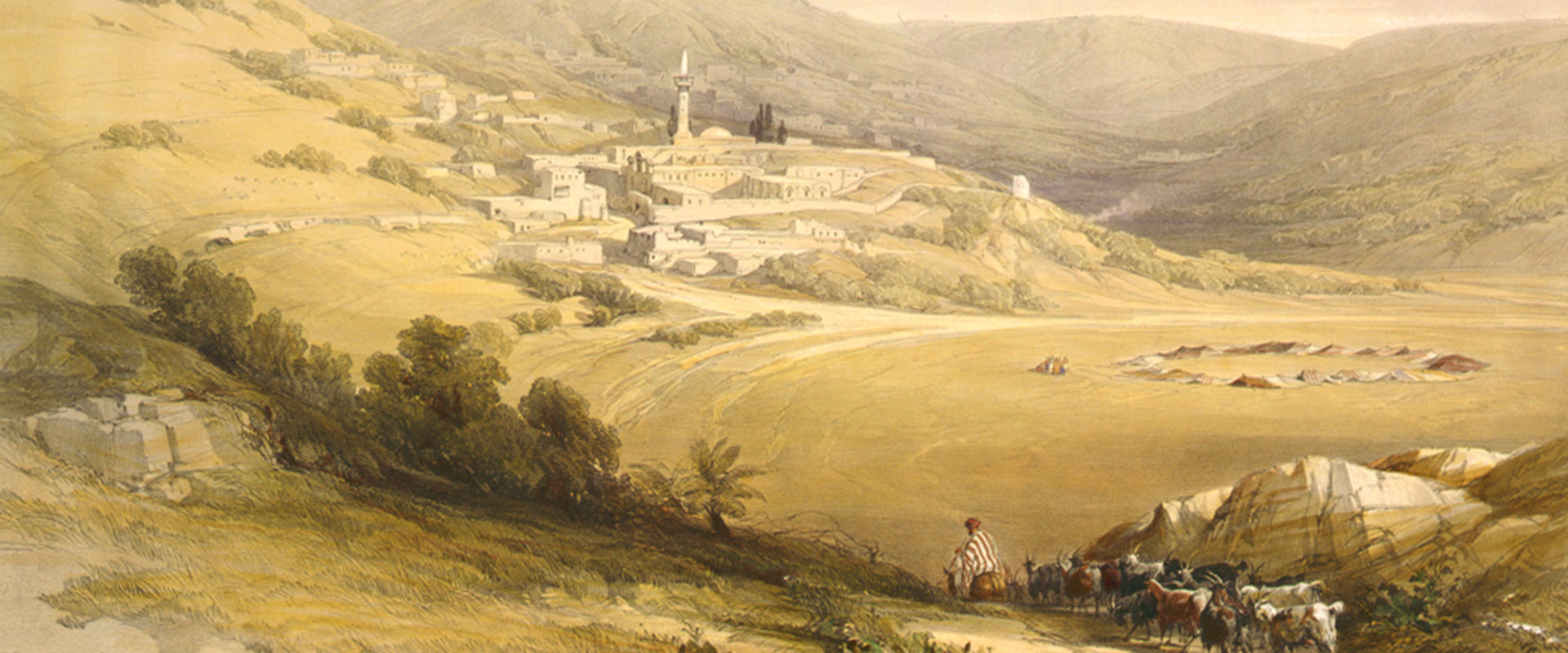The biblical city of Aphek in located in the Plain of Sharon in a important and fertile land which runs between the central mountains and the shore of the Mediterranean sea.
Aphek was an important urban center and the governor was representing the Egypt empire domination in Canaan lands.
The area is rich in fountains, water streams, the soil is rich because the massive rains in this are in winter season.

Now at that time the Philistines came together to make war against Israel, and the men of Israel went out to war against the Philistines and took up their position at the side of Eben-ezer: and the Philistines put their forces in position in Aphek.
1 Samuel 4:1 BBE

Ebenezer and Aphek. Both of these sites are in the area of an important pass between the hill country and the plain. The area is about twenty miles west of Shiloh and north of Philistine territory (about twenty miles north of Ekron, the furthest north of the five major Philistine cities). Aphek is identified with modern Ras el-Ain, also called Tell Aphek, by the Yarkon River. It is named in Egyptian texts as early as the nineteenth-century Execration texts and appears in the itineraries of Thutmose III (fifteenth century). Excavations have uncovered evidence of Philistine settlement on the site in this period. The identification of Ebenezer is less certain. Many now believe that it is the site called Izbet Sartah located on the edge of the hill country across the pass from Aphek and about two miles further east. The small settlement (half an acre) was established late in the Judges period and was abandoned early in the eleventh century. One of the oldest and longest proto-Canaanite inscriptions was found at this site. The ostracon has eighty-three letters but no coherent words, and has been identified as an abecedary (alphabet list). Some interpreters think it should be classified as early Israelite.
John H. Walton, Victor H. Matthews, and Mark W. Chavalas, The IVP Bible Background Commentary, Downers Grove: InterVarsity Press, 2000, 285-286.

In the late 1970s an ostracon containing a five-line inscription was recovered from an Early Iron Age grain silo in the ruins of Izbet Sarteh. The fifth line was soon identified as an alphabet, but the first four lines remained undeciphered until recently. According to William H. Shea, they read as follows: “Unto the field we came, (unto) Aphek from Shiloh. The Kittim took (it [the ark of the covenant] and) came to Azor, (to) Dagon lord of Ashdod, (and to) Gath. (It returned to) Kiriath Jearim. The companion of the foot soldiers, Hophni, came to tell the elders, “A horse has come (and) upon (it was my) brother for us to bury’” (“The ‘Izbet Sartah Ostracon,” Andrews University Seminary Studies 28, 1 [1990]: 62). Shea (p. 81) observes that eleven of the key words in the inscription appear in the parallel account of the capture of the ark in chapters 4-6: “Aphek” (4:1), “field” (4:2), “elders” (4:3), “Shiloh” (4:3-4), “Hophni” (4:4, 11, 17), “foot soldiers” (4:10), “take/capture” (4:11ff.), “tell” (4:13), “Ashdod” (5:1-7), “Gath” (5:8), “Kiriath Jearim” (written “Jearim Kiriah”; 6:21). If Shea’s reading holds up under further analysis, the Izbet Sarteh ostracon contains the earliest known extrabiblical references to an OT event (the capture of the ark by the Philistines) and an OT person (Hophni) (cf. William H. Shea, “Ancient Ostracon Records Ark’s Wanderings,” Ministry [1991]: 14).
EBC Notes, 1st, Grand Rapids: Zondervan, 1990, paragraph 3030.
In Josh 12:18 we should probably read with the LXX “the king of Aphek in Sharon.” This may correspond to Aphek in 1 Sa 4:1. It was a royal city of the Canaanites whose king was slain by Joshua. Probably it is the Aphek mentioned by Josephus as being near to Antipatris (BJ, II, xix, 1). Kakon, a strong position commanding the main entrance to Samaria might suit; but the name has perished.
“Aphek,” ISBE, paragraph 3301.















